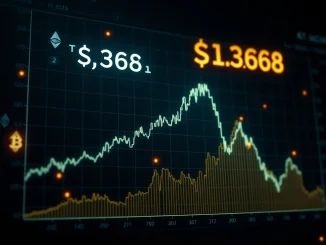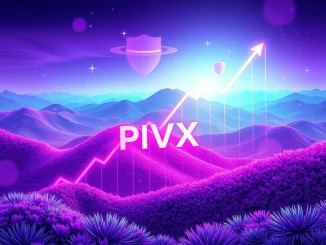
In a surprising turn of events amidst a challenging period for digital collectibles, OpenSea, a leading non-fungible token (NFT) marketplace, has successfully reclaimed its position at the forefront of the industry. Despite a significant downturn impacting the broader sector, OpenSea’s **NFT market share** has surged, demonstrating remarkable resilience and strategic effectiveness.
OpenSea’s Remarkable Rebound in NFT Market Share
Recent data confirms that **OpenSea** has not only held its ground but has actually increased its dominance. According to figures tracked by NFTScan, and reported by Cointelegraph, OpenSea commanded over 40% of the total **NFT trading volume** across the market over the past 30 days. This performance places it significantly ahead of its closest competitors and marks a clear return to the top spot it previously held.
Let’s look at how OpenSea stacks up against other major players:
- OpenSea: Over 40%
- Blur: Approximately 23%
- Magic Eden: Around 7.7%
This comparison highlights OpenSea’s substantial lead, nearly doubling the volume of its next closest rival, Blur, and vastly exceeding that of Magic Eden, a platform traditionally strong in the Solana ecosystem.
Understanding the Broader NFT Market Slump
OpenSea’s resurgence is particularly noteworthy when viewed against the backdrop of the overall **NFT market slump**. The first quarter of the year saw a dramatic decrease in sales volume, plummeting by 61% compared to the same period last year. This contraction reflects broader macroeconomic pressures, shifting investor sentiment, and a natural cooling-off period after the intense hype cycles of previous years.
Factors contributing to the slump include:
- Decreased speculative interest
- Macroeconomic uncertainties impacting disposable income
- Market saturation with new projects
- Increased scrutiny and regulatory discussions
Operating and thriving in such an environment presents significant challenges, making OpenSea’s performance stand out even more.
Driving Factors: New Features and Solana Trading
How did OpenSea manage to defy the prevailing market trend? The data suggests two primary catalysts:
- Implementation of New Platform Features: While specific features aren’t detailed in the initial report, marketplace enhancements often include improved user interfaces, better discovery tools, enhanced security measures, more flexible listing options, and features catering to specific collector or creator needs. These improvements likely contributed to a better user experience, retaining existing users and attracting new ones.
- Integration of Solana Trading: The launch of **Solana trading** on OpenSea was a strategic move that significantly expanded its addressable market. Solana is a major blockchain ecosystem with a vibrant NFT community and distinct projects. By integrating support for Solana-based NFTs, OpenSea opened its doors to a large pool of collectors and creators who previously primarily used Solana-native marketplaces like Magic Eden. This integration diversified OpenSea’s offerings and captured a new segment of the market volume.
The ability to trade NFTs from multiple major blockchains (like Ethereum, Polygon, Klaytn, and now Solana) on a single platform provides convenience and potentially attracts cross-chain collectors.
What This Means for the NFT Ecosystem
OpenSea’s strong performance offers several insights:
- Market Consolidation: In a downturn, dominant platforms with strong brands and resources often gain market share as smaller or less adaptable competitors struggle.
- Platform Adaptability: OpenSea’s willingness to integrate new blockchains like Solana demonstrates the importance of evolving with the market and embracing different ecosystems.
- Feature Importance: Continuous platform improvement, even during slow periods, can be crucial for maintaining user engagement and attracting activity.
- Resilience of Core Marketplaces: Despite the overall slump, significant trading volume still exists, and established platforms like OpenSea are best positioned to capture it.
Looking Ahead: Challenges and Opportunities
While OpenSea celebrates reclaiming the top spot, the path forward isn’t without challenges. The overall **NFT market slump** persists, and sustained growth will depend on broader market recovery, continued innovation, and navigating potential regulatory hurdles. Competitors like Blur remain significant forces, particularly among professional traders, and Magic Eden retains its strength within the Solana community.
However, OpenSea’s expanded multi-chain support and focus on user experience position it well to capitalize on any future market recovery and continue attracting a diverse user base.
Compelling Summary
In conclusion, OpenSea has successfully navigated a challenging period for the digital collectibles space, reclaiming its dominant **NFT market share** by surpassing 40% of recent **NFT trading volume**. This impressive feat occurred despite a significant **NFT market slump**, highlighting the platform’s resilience. Key drivers behind this success appear to be the introduction of new platform features and the strategic integration of **Solana trading**, which broadened its market reach. While the overall market faces headwinds, OpenSea’s performance demonstrates the power of adaptation and feature development in maintaining leadership during a downturn, setting a strong precedent for its future trajectory in the evolving NFT landscape.



